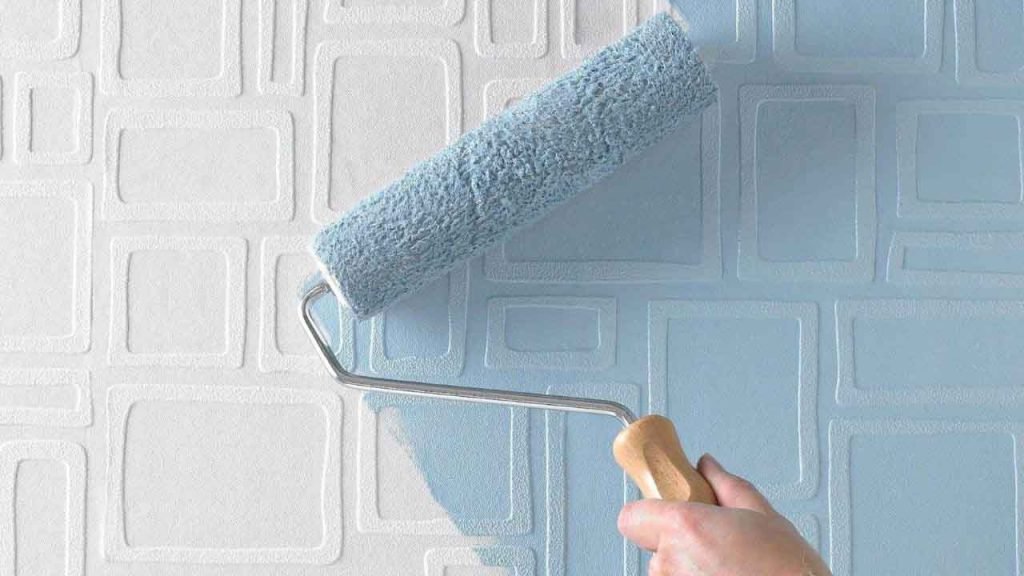Are you staring at your outdated wallpaper, dreaming of a fresh and modern look in your space? The good news is that you don’t necessarily have to embark on the laborious task of removing it entirely. Instead, you can explore the transformative magic of paint. Yes, it’s possible to paint over wallpaper, and in this comprehensive article, we will explore the pros and cons of painting over wallpaper, the steps involved in doing so, and some valuable tips to ensure a successful outcome.
Why Paint Over Wallpaper?

Painting over wallpaper can be an attractive option for those looking to update their interior spaces without the labor-intensive process of wallpaper removal. It can save time, effort, and money while giving your room a fresh new look.
Considerations Before You Begin
Before you embark on a wallpaper painting project, it’s essential to weigh the pros and cons carefully. Assess the condition of your existing wallpaper, your desired paint color, and the overall aesthetics you want to achieve. Now, let’s dive into the advantages and disadvantages of this approach.
Pros and Cons of Painting Over Wallpaper
Pros
Time and Cost-Efficient
Painting over wallpaper is faster and less expensive than removing it.
Aesthetic Freedom
It allows you to change the room’s color without losing the wallpaper’s texture or pattern.
Hide Imperfections
Painting can conceal minor imperfections in the wallpaper, such as small tears or wrinkles.
No Messy Removal
Avoid the mess and potential damage that can come with wallpaper removal.
Cons
Limited Longevity
Painted wallpaper may not last as long as a traditional paint job on a well-prepared surface.
Texture Concealment
Thick or textured wallpapers may not take paint well, leading to a less-than-smooth finish.
Difficult Removal
If you decide to remove the wallpaper later, it can be more challenging due to the added layers of paint.
Professional Help
For the best results, it may be necessary to hire a professional painter.
Painting Over Wallpaper: Step-by-Step
Step 1: Protect the Room
Cover the floor with drop cloths, and use painter’s tape to protect trim, baseboards, and outlets. Remove any furniture from the room or place it in the center, covered with plastic.
Step 2: Apply a Primer
Apply a thin, even coat of wallpaper primer using a paintbrush or roller. Allow it to dry completely before proceeding.
Step 3: Painting the Wallpaper
Use a high-quality latex-based paint and apply it evenly over the wallpaper in long, smooth strokes. Start at the top of the wall and work your way down.
Step 4: Applying Additional Coats
Depending on the color and coverage you desire, you may need to apply multiple coats of paint. Allow each coat to dry before adding the next.
Step 5: Letting It Dry
Give the final coat of paint ample time to dry thoroughly before moving furniture back into the room or removing drop cloths.
Tips for a Successful Wallpaper Painting Project
Avoid Over-Saturation
Be cautious not to oversaturate the wallpaper with paint, as excessive moisture can cause it to peel or bubble.
Be Patient
Take your time during surface preparation and painting. Rushing can lead to uneven results.
Plan Your Colors Carefully
Choose paint colors that complement the existing wallpaper pattern to achieve the desired aesthetic.
Maintenance and Longevity
Maintain your painted wallpaper by cleaning it gently with a damp cloth when needed. Avoid using abrasive cleaners that can damage the finish.
When to Seek Professional Help
If you encounter challenges during the wallpaper painting process or have concerns about the wallpaper’s condition, consult a professional painter for expert guidance.
Common Mistakes to Avoid
Skipping Surface Preparation
Properly preparing the wallpaper surface is crucial for a successful project. Skipping this step can result in poor adhesion and an uneven finish.
Using the Wrong Paint
Choosing the wrong type of paint can lead to subpar results. Ensure you select latex-based paint designed for wallpaper.
Rushing the Process
Patience is key to achieving a professional-looking finish. Rushing through the steps can lead to mistakes and frustration.
Conclusion
Painting over wallpaper can be a viable solution for updating your living space with minimal effort. By following the right steps and taking your time, you can achieve a fresh and appealing look for your room.
However, if you find yourself unsure or hesitant about tackling this project on your own, it’s always wise to consider seeking professional assistance. A skilled decorator can ensure a flawless finish and save you time and potential headaches.
For top-notch professional service, don’t hesitate to contact Bourne Decorators. Our experienced team can expertly handle the task of painting over wallpaper, providing you with a beautiful and professionally executed result. Get in touch with us today to transform your space effortlessly.
